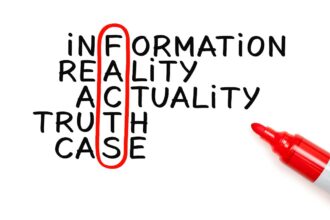How often do you document your meeting minutes? Do you pay enough attention to writing down all important information which is being shared with or among stakeholders? About decisions made? Do you follow up on each topic? Do you hold people accountable for what has been discussed and agreed?
I have a firm believe that this is one of the very essential tools for effective management, which project managers have to use, especially because of the amount of meetings they take part in and great amount of communication channels within projects. Let me explain why.
1. What are the meeting minutes?
Meeting minutes, so called MoMs (minutes of the meetings) or MMs (meeting minutes) are written notes/bullet points, which are made in written form to document the meeting (face-to-face or virtual/teleconference), which was held for specific purpose and which usually includes 2 or more participants.
The MoMs include documentation of discussed topics, decisions, important questions/issues, required actions and next steps. In my practice I use my project book where I document, monitor and control decisions, issues and actions on regular basis.
I use MoMs mainly as important source of input, which I later transform into actions, issues, decisions or changes. In my practice, I write minutes myself if the topic is related to my scope, dependencies, team and project(s) as a whole. You might call me old fashioned, but I mainly write MoMs by hand – later I transform them into digital format. For me it is a matter of personal preference. I think on paper and for me picture is better than thousand words, my notes are very detailed.
Perhaps, this is why I am very well informed about all what is going on in projects, what has been discussed, what pieces of information is needed from whom and for whom, by when and how they are tracked. It is especially helpful when you operate in multinational environment, involving more than hundred of different stakeholders, with multiple topics, issues and communication channels.
2. Who is responsible for writing MoMs?
In real life – who is primarily responsible for writing meeting minutes? Well, the answer is that it is a responsibility of the person, who is hosting the meeting. Often, though, project managers/managers involve the Project Management Office (PMO) specialists, who are doing this job while the meeting host is leading/participating in the discussion.
This depends upon the type of the meeting (with customer, with project team or with the upper management). But again, depends on the type of meeting. If you are leading – you decide, what is relevat and what is not. It is a combination of identifying important information, filtering the unimportant, writing that down in short and meaningful manner and also in such a way, that later it can be easily related to.
3. Why is it important to write MoMs?
There are at least few reasons why meeting minutes are important:
- You have a reference to what was discussed (you may remember the fact of having the discussion, but trust me – after a full week filled with meetings and different topics, you will forget all the details the very next day or even an hour after the meeting was held),
- It is a valid document in which specific decisions have been made and you are able to refer to it when needed,
- You have a reason to hold people accountable for commitment or promises they have made,
- You can use the MoMs to hand over your responsibilities while you are on vacation. Your stand-in can easily refer to them and be up to date with recent discussions held,
- You can introduce the new member of the team to the topic(s),
- It is your “evidence ticket” in case you need to provide any facts,
- You are able to use MoMs as an input for your issue/action/decision/changes tracker – follow up, monitor and control, manage those points.
Remember that meeting minutes shall serve you, they shall be your tool for effectiveness. And if you train this skill right, you will reap the benefits 🙂
4. What is the best way to write MoMs and what to do with them afterwards?
First, there is no such thing as best way, but I believe there is such thing as effective way. Don’t overcomplicate. Make them easy to read and use bullet points. Would be good if you could develop your own style of writing MoMs: you will enjoy doing it and stand out. I will mention some of the things I do:
- When I document discussions in some of my virtual project meetings, I share my screen via Cisco Webex, so that participants see what points are being discussed discuss and what I document,
- Benefit No.1 – People see what I document,
- Benefit No.2 – People are aware of what was agree to and what I am writing down,
- I distribute MoMs to the participants after the meeting,
- Benefit No.3 – People know where to find the MoMs and are able to review them when necessary,
- I store them in assigned and structued folder, which is accessible online. Don’t store them on your PC only. This is one of the ways to manage your communications in the projects,
- Benefit No.4 – It provides a clear structure and accessibility to the project stakeholders,
- I print most important of them to have a visual view (you can have it on your desk, if you have to follow up and want to review them at any moment),
- I track people on actions in the MoMs,
- Benefit No.5 – You can make use of the MoMs to manage your project effectively – you are the conductor of the orchestra. Remember – when you document the meeting and there are actions to be taken – assign them to respective owner (if nobody owns the task, it will be done by nobody),
- Use them as a baseline during the next meeting for follow up discussions,
- Write them short, clear and to the point. Nobody likes reading essays, this is why the MoMs are called MoMs – minutes – to get up to date within minutes.
Let me know if you would add more to the list 🙂
5. Lesson Learned: what happens if you don’t document the important meeting?
Here’s what happened:
In the regular project status call it was identified in the discussion with the project team that there might be a delay in the project. The additional equipment, which had to be ordered for the project purposes, had not been ordered on time and further progress in project implementation was seriously questioned.
One of the project team members had a chat with a project stakeholder and based on that discussion made an agreement over the phone to borrow from him the equipment temporarily. This was a good idea to mitigate the risk of project delay because of the equipment dependency, but it was not analysed in detail, there was no impact assessment and no communication to other stakeholders.
As the result:
- This was not documented in any e-mail, any minutes… anywhere. Let me put it this way – it was kept only in people’s heads,
- The stakeholder, who had to officially confirm it, refused to borrow the equipment at the end and no one sent official information to follow up and this all took all the project team by surprise – as whole project team was counting and preparing the project plan based on the initial assumption of borrowing the equipment,
- The risk materialised into an issue, it was too late to come up with any mitigation idea. Team had to identify the workaround.
The major program manager expressed his concern about the situation and really advised to keep a better track of what has been agreed and decided, as it might significantly impact the future project manager career development.
At the end, of course, the situation was resolved, but it has cost team the precious time and nerves.
6. Conclusion
If you want to be professional and keep the track of what is going in the project, use meeting minutes effectively and encourage your team members to use them as well. Remember, if it was not documented, it might as well never have happened.
Thank you for reading the article the and wish you good luck in keeping better records on your projects!
Do you find the meeting minutes useful or have you identified better alternatives?








